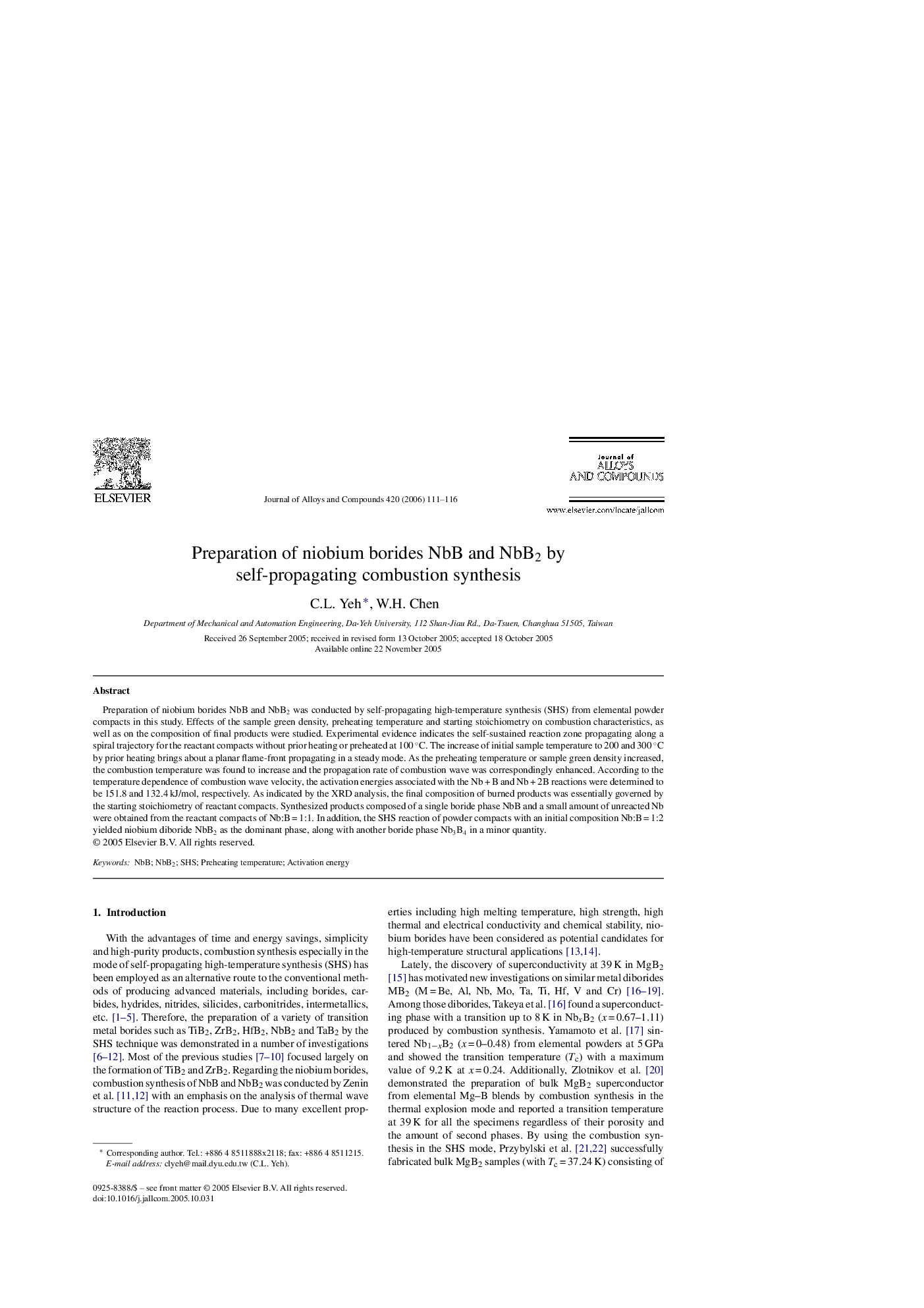| Article ID | Journal | Published Year | Pages | File Type |
|---|---|---|---|---|
| 1627228 | Journal of Alloys and Compounds | 2006 | 6 Pages |
Preparation of niobium borides NbB and NbB2 was conducted by self-propagating high-temperature synthesis (SHS) from elemental powder compacts in this study. Effects of the sample green density, preheating temperature and starting stoichiometry on combustion characteristics, as well as on the composition of final products were studied. Experimental evidence indicates the self-sustained reaction zone propagating along a spiral trajectory for the reactant compacts without prior heating or preheated at 100 °C. The increase of initial sample temperature to 200 and 300 °C by prior heating brings about a planar flame-front propagating in a steady mode. As the preheating temperature or sample green density increased, the combustion temperature was found to increase and the propagation rate of combustion wave was correspondingly enhanced. According to the temperature dependence of combustion wave velocity, the activation energies associated with the Nb + B and Nb + 2B reactions were determined to be 151.8 and 132.4 kJ/mol, respectively. As indicated by the XRD analysis, the final composition of burned products was essentially governed by the starting stoichiometry of reactant compacts. Synthesized products composed of a single boride phase NbB and a small amount of unreacted Nb were obtained from the reactant compacts of Nb:B = 1:1. In addition, the SHS reaction of powder compacts with an initial composition Nb:B = 1:2 yielded niobium diboride NbB2 as the dominant phase, along with another boride phase Nb3B4 in a minor quantity.
